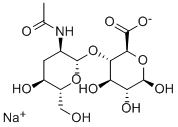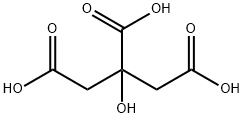10-Undecenoic acid , 95% , 112-38-9
Synonym(s):
10-Undecenoic acid;Undecylenic acid;Undecylenic-10 acid
CAS NO.:112-38-9
Empirical Formula: C11H20O2
Molecular Weight: 184.28
MDL number: MFCD00004442
EINECS: 203-965-8
| Pack Size | Price | Stock | Quantity |
| 25ml | RMB31.20 | In Stock |
|
| 250ML | RMB84.00 | In Stock |
|
| 1L | RMB332.00 | In Stock |
|
| 5L | RMB1052.80 | In Stock |
|
| others | Enquire |
PRODUCT Properties
| Melting point: | 23-25 °C (lit.) |
| Boiling point: | 137 °C/2 mmHg (lit.) |
| Density | 0.912 g/mL at 25 °C (lit.) |
| vapor pressure | 0.019Pa at 20℃ |
| FEMA | 3247 | 10-UNDECENOIC ACID |
| refractive index | n |
| Flash point: | 300 °F |
| storage temp. | Store below +30°C. |
| solubility | water: insoluble |
| form | Crystalline Low Melting Solid or Liquid |
| pka | 4.78±0.10(Predicted) |
| Colour Index | 42650 |
| Specific Gravity | 0.911 (25/25℃) |
| color | Pale yellow |
| Odor | sweet woody |
| Odor Type | woody |
| biological source | synthetic |
| Water Solubility | INSOLUBLE |
| JECFA Number | 331 |
| Merck | 14,9848 |
| BRN | 1762631 |
| LogP | 4 at 20℃ |
| CAS DataBase Reference | 112-38-9(CAS DataBase Reference) |
| NIST Chemistry Reference | Undecylenic Acid(112-38-9) |
| EPA Substance Registry System | 10-Undecenoic acid (112-38-9) |
Description and Uses
Undecylenic acid (C11) or also called 10-undecenoic acid is an organic unsaturated fatty acid derived from castor oil by cracking. Undecylenic acid is an FDA approved active ingredient in medications for skin infections, and relieves itching, burning, and irritation. In technical applications it is used because if its antifungal properties.appearance (25°C) White or very pale yellow crystalline
mass or clear colourless pale
yellow liquid
acid value mg KOH/g 295 - 304
saponification mg KOH/g 295 - 304
iodine value) gI2/100g 132 - 136
congealing point °C 23 - 24
Purity by GC % min. 99%
Undecylenic acid can be used in silicon-based biosensors. Monolayers can be made on bare silicon transducer surfaces with the help of covalent bonds between silicon atom and the double bonds of undecylenic acid. The carboxylic acid groups remain available for the conjugation of biomolecules such as DNA or proteins.
Safety
| Symbol(GHS) |  GHS07 |
| Signal word | Warning |
| Hazard statements | H315-H319-H412 |
| Precautionary statements | P264-P273-P280-P302+P352-P305+P351+P338-P332+P313 |
| Hazard Codes | Xi |
| Risk Statements | 36/37/38-52/53-36/38 |
| Safety Statements | 26-61-37/39-36 |
| RIDADR | UN 3261 8/PG 2 |
| WGK Germany | 1 |
| RTECS | YQ2975000 |
| Autoignition Temperature | 275 °C |
| TSCA | Yes |
| HS Code | 29161910 |
| Toxicity | LD50 in mice (g/kg): 8.15 orally; 0.960 i.p. (Newell) |



